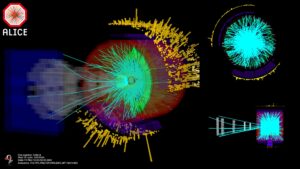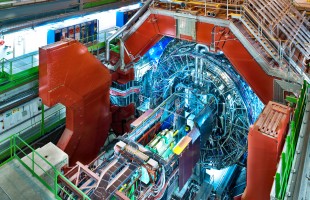The ALICE experiment at CERN has recorded the first collisions of lead nuclei with record energy in the new measurement period with the LHC accelerator.
Last Friday, for the first time since its restart this summer, the LHC delivered lead nuclei with the highest energy ever: 5.4 TeV. The ALICE detector recorded how the heavy lead nuclei collided inside the detector and produced avalanches of other particles.

This time, the injection of lead was short-lived and mainly intended to test the accelerator itself, as well as the detector. The LHC usually accelerates protons, before the other detectors in the 27-kilometer larger underground ring. ATLAS, CMS and LHCb study more individual particle processes, for example to better understand the Higgs particle. But these detectors also observed the lead collisions.
Short test run
The short run now is the result of CERN’s decision to turn on the accelerator for a shorter time in the coming period, in order to save 15-20 percent power.
Nevertheless, the ALICE experiment is satisfied with the observations Friday, said Marco van Leeuwen, soon-to-be spokesperson for the experiment and affiliated with Nikhef. “By doing little now we can and next year we can do more and on balance we even gain something.”
ALICE program leader Raimond Snellings, affiliated with Utrecht University and Nikhef, is also excited about the test. “We are ready for the real thing,” he says.
ALICE has been extensively rebuilt and improved in recent years for future intense beams at the LHC, with significant input from Nikhef scientists and technicians. Among other things, the inner pixel sensors for ALICE were developed and partly built at Nikhef.
